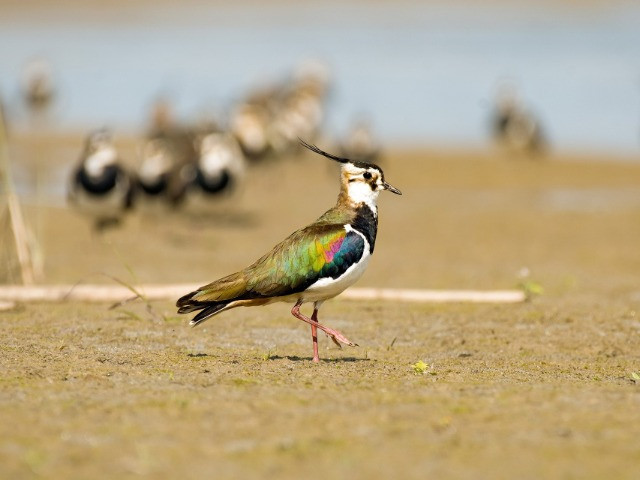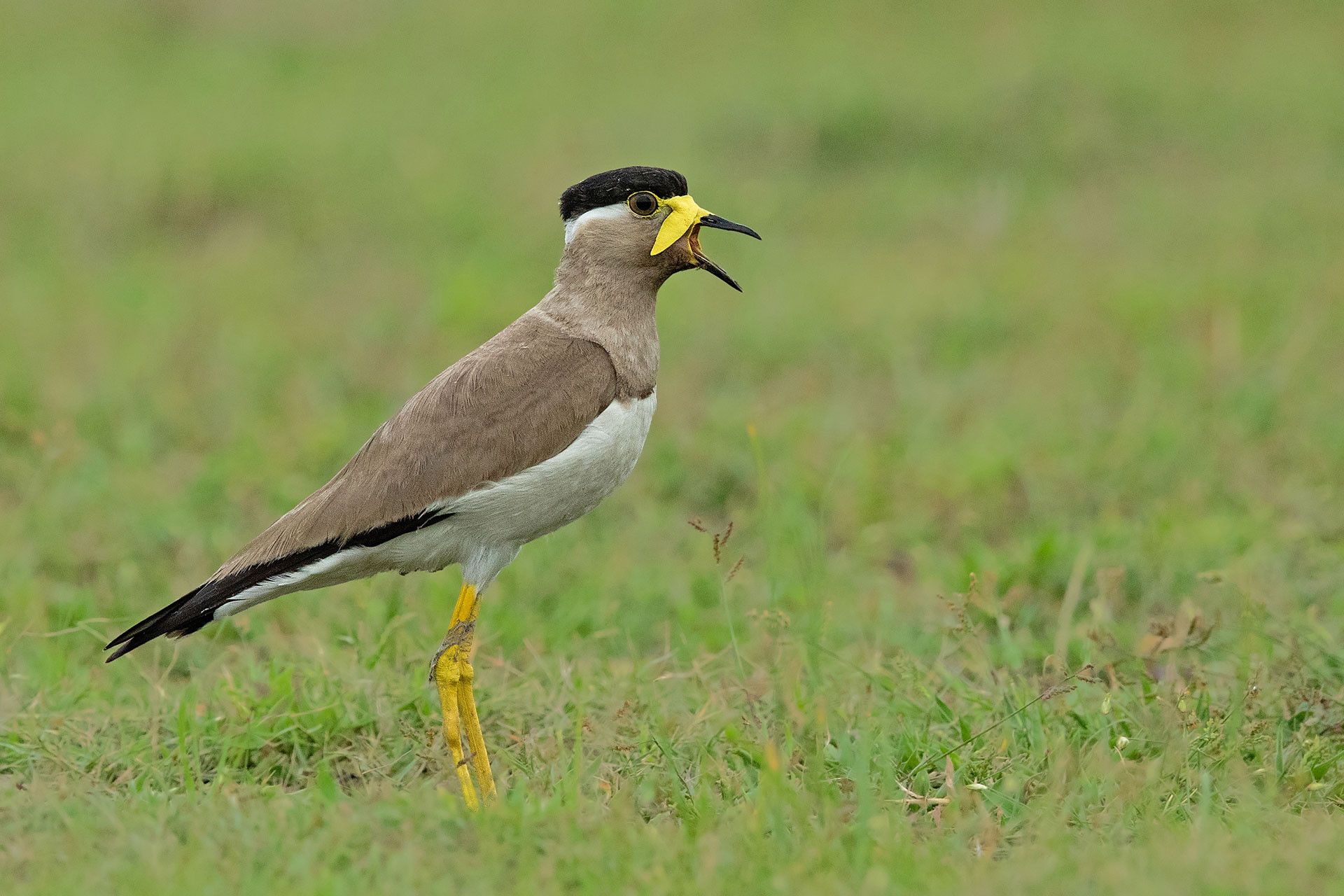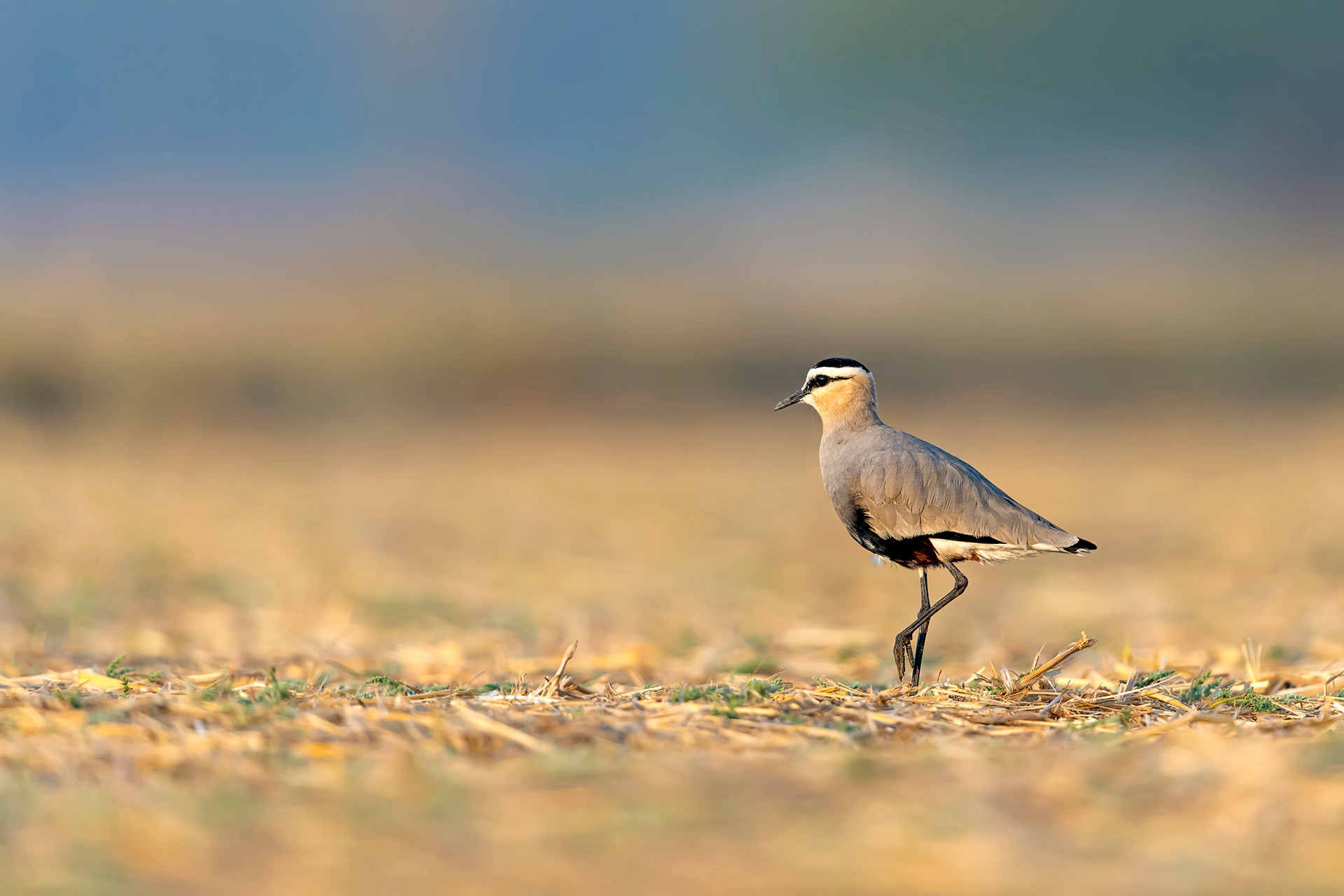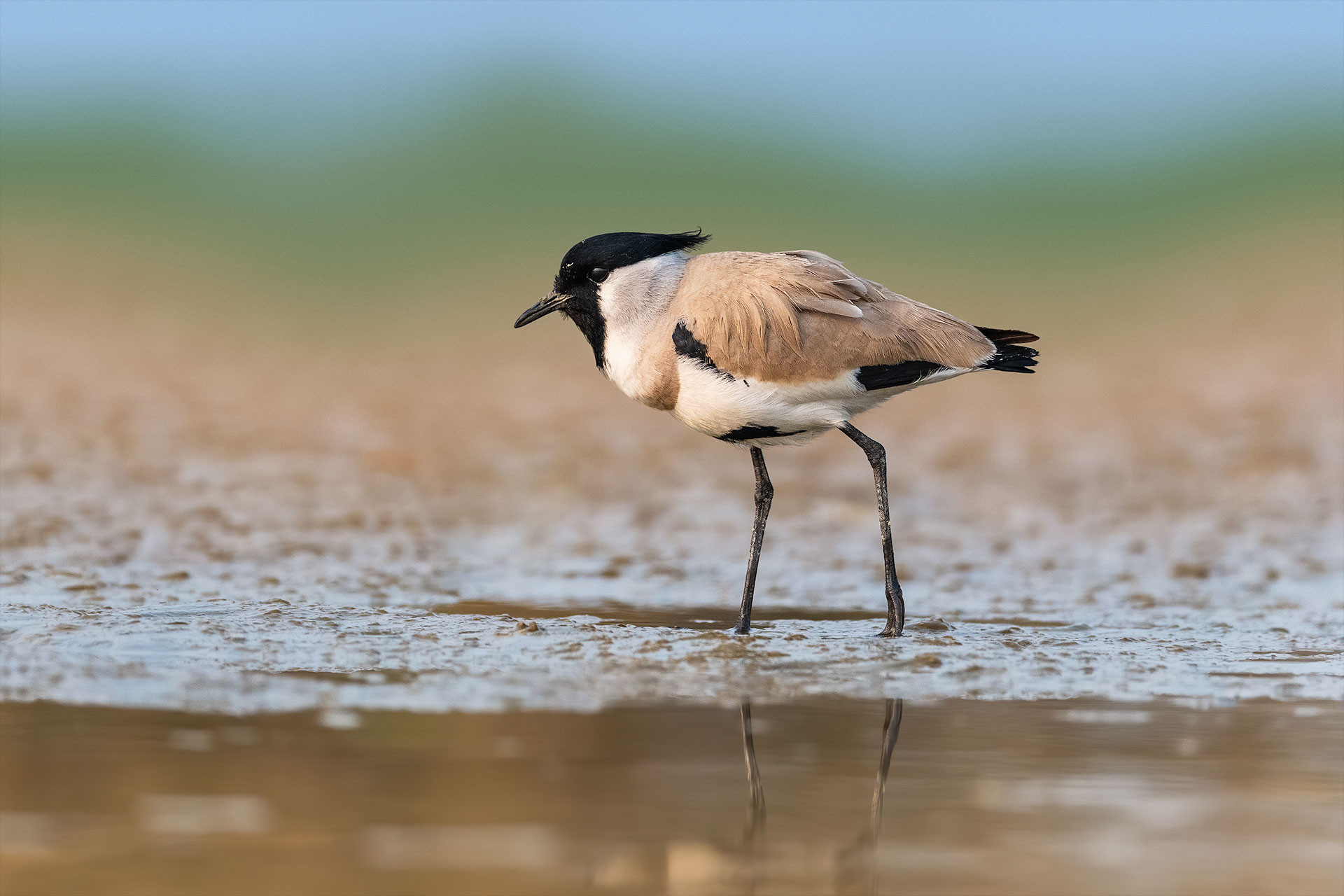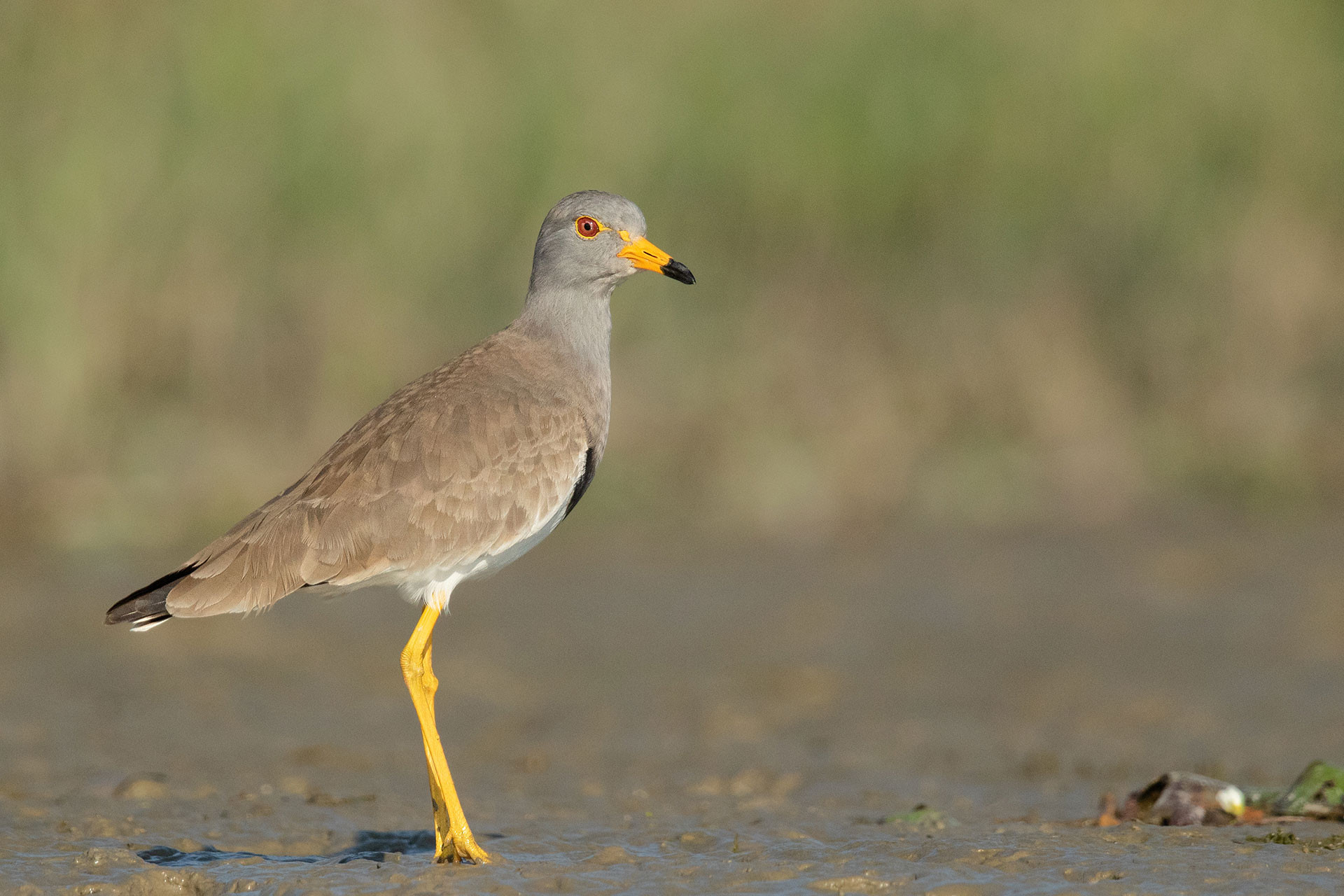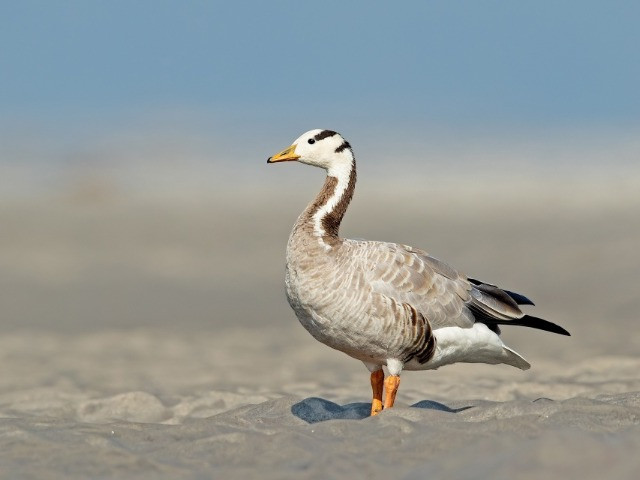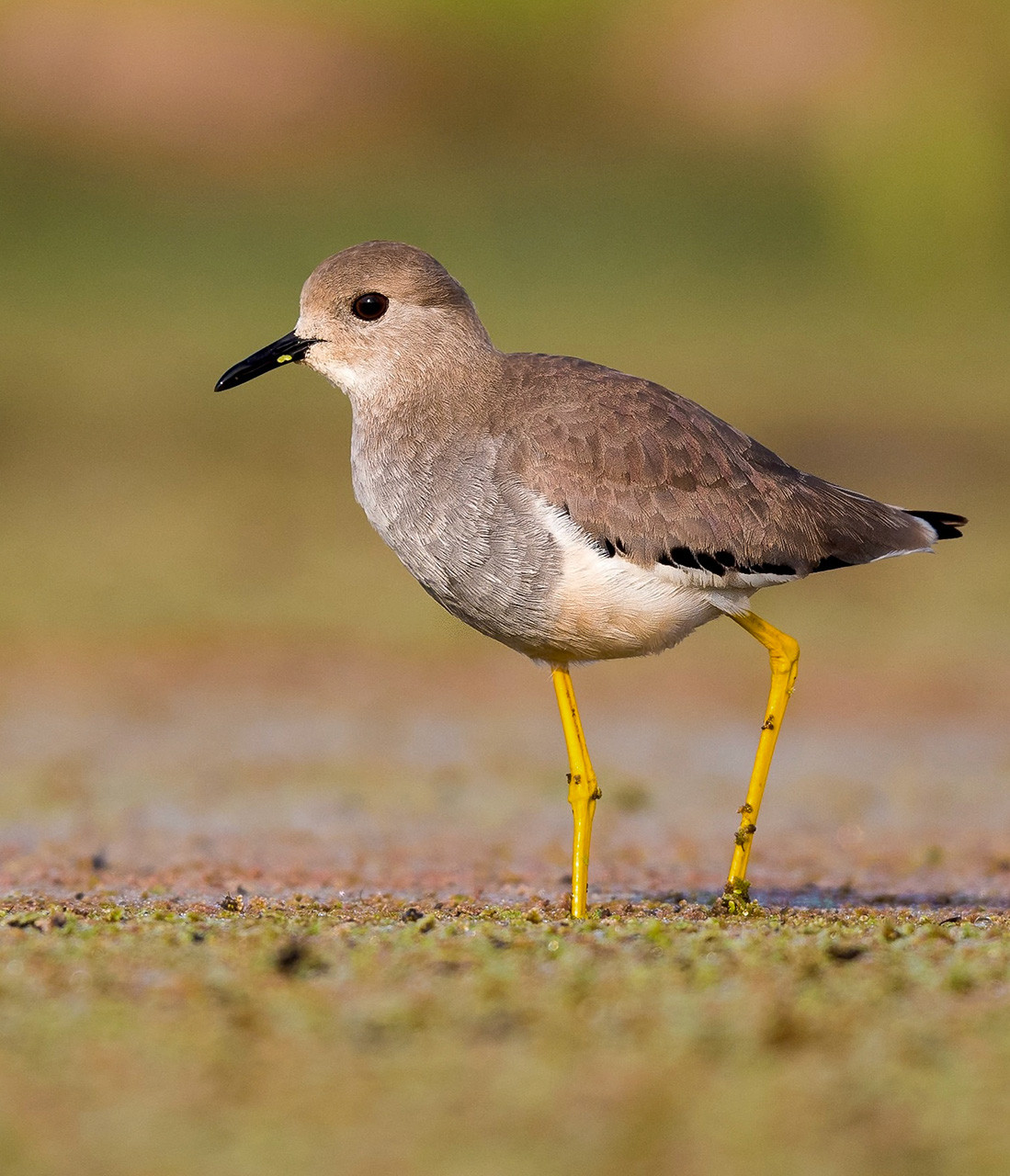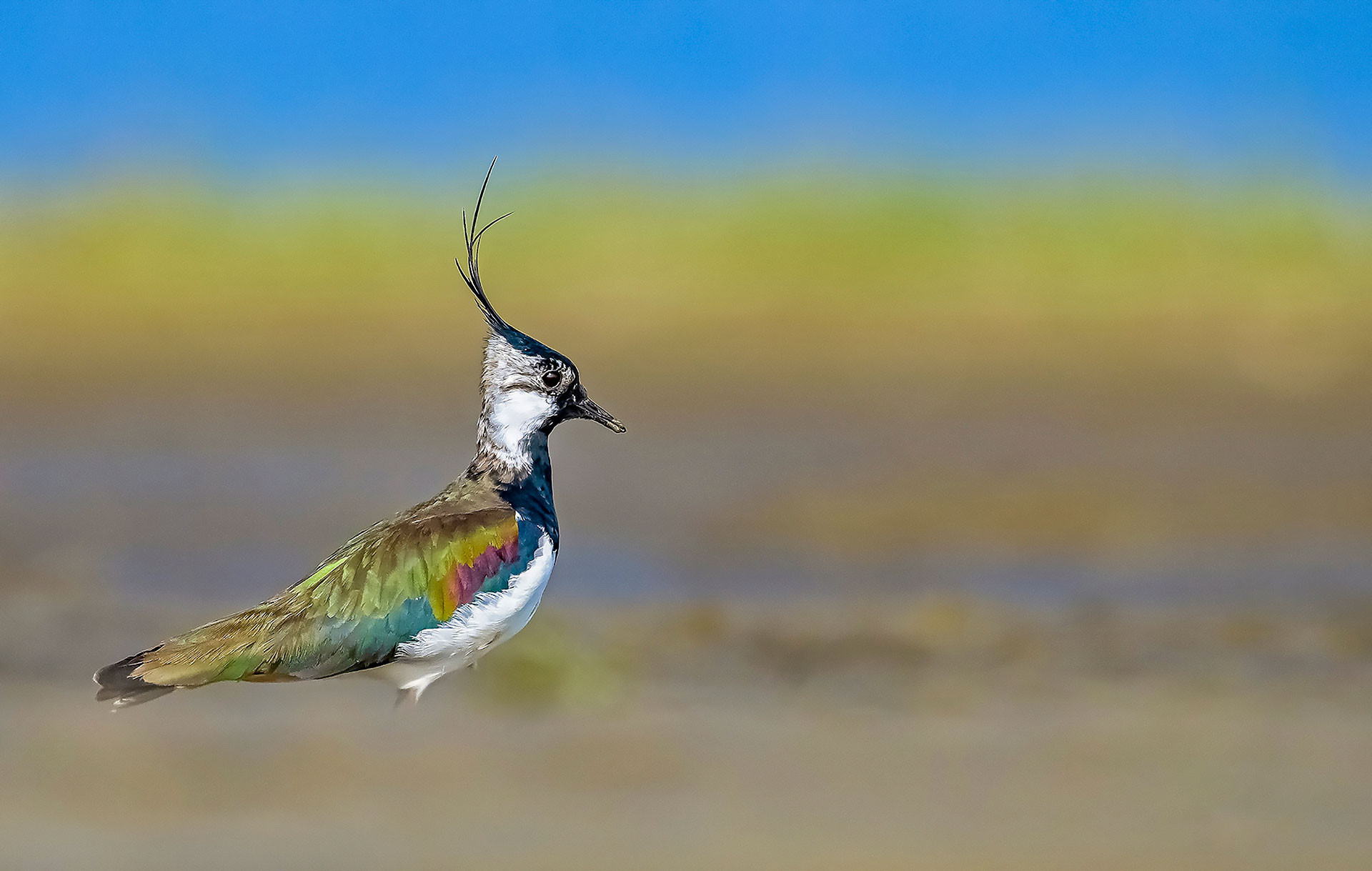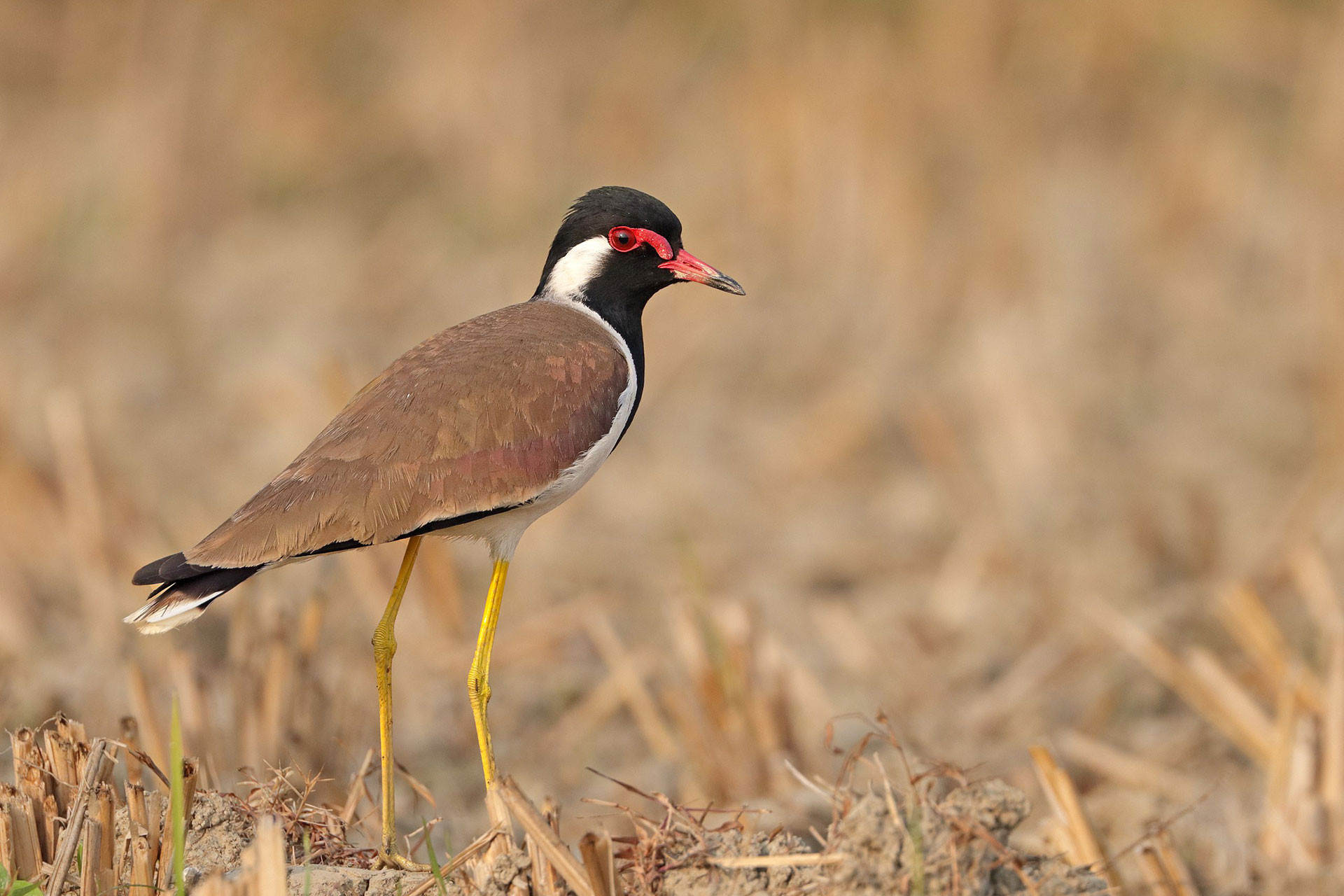"They roll and swoop, driving away other males and making their famous peewit calls. I am passionate about birds that don't sound like birds."
If you are wondering which bird the quote talks about, then look closer. The clue lies somewhere in there.
In a video for BBC Earth, professional wildlife sound recordist and marine zoologist Gary Moore highlights the displays of lapwings while talking about why the birds are so unique. The peewit noise, which is their signature call, is something that has Moore intrigued. But the reason he sits in a camouflage suit holding a large recording device is to capture the elusive sound of their wingbeats. As Moore explains, the sound is created using the feathers at the tip of the wings by the males, and is one that he has never captured before.
Members of the Charadriidae family, lapwings are ground-dwelling birds that are similar to plovers. Seven lapwing species are found in India, of which four are migratory in nature. Lapwings mainly feed on insects and earthworms, and keep the insect population in check.
A cursory glance of the conservation status reveals that while some species are found in stable populations, others are near threatened or endangered. Lapwings depend on two major habitat regions—grasslands and wetlands—both of which are under stress from various anthropogenic activities. Additionally, being ground-nesting in nature adds to their woes as the eggs are frequently hampered or destroyed.
For example, among all the birds that live in the Eurasian Steppes, Sociable Lapwings are considered the most threatened. Migratory in nature, the bird requires grasslands for breeding, but they also lay eggs in agricultural fields. This puts the eggs in danger from grazing animals and various field activities. Another example is the Red-wattled Lapwing. Owing to increased urbanisation and other disturbances, the lapwing species, a common sight across the country, has even been documented to be laying eggs on rooftops to protect them.
It is abundantly clear that lapwings need our immediate attention across species. Lapwings also have various habitat requirements to aid them with their nesting and breeding cycles. For example, when they lay their eggs, which resemble the surroundings and match the gravel, they need vast open spaces to ensure that there are no predators in the vicinity. They even use diversion tactics with their loud calls to prevent predators from approaching the eggs. Once the eggs hatch, lapwing chicks are able to walk and feed in a few hours. The parents often lead them to nearby sparsely vegetated areas where there are enough invertebrates for them to feed on. It is critical that we pay attention to the various needs of these birds and understand how habitat changes impact their life cycle.
In this list, we share a few basic details about the lapwings of India. We hope that this will encourage more conversations on protecting the birds and the wetlands and grasslands they greatly depend on.
Sociable Lapwing (Vanellus gregarius)
Sociable Lapwings are brownish-grey in colour with a black-brown crown. The birds are found in central Asia as well as parts of the Arabian peninsula, and Pakistan and Africa. In India, they occupy the northwestern parts of the country. Sociable Lapwings breed in Kazakhstan and south central Russia and winter in the Arabian peninsula, India and other neighbouring regions. The birds prefer temperate areas, dry grasslands and wastelands as habitats. Sociable Lapwings are listed as Critically Endangered on the IUCN Red List and face various threats. Apart from habitat modification, the destruction of nests due to agricultural activities in their wintering and breeding regions is a major threat to the species. Additionally, hunting along the migratory route is also a cause for concern. Conservation measures are needed to protect adults and improve egg survival.
River Lapwing (Vanellus duvaucelii)
Identified by their black, white and buff-coloured appearance, River Lapwings have a distinct black crest, which is raised when the bird is displaying. Both male and female River Lapwings look alike. The bird is found across India and the neighbouring countries of Bangladesh, Thailand, Myanmar, and China. They are widely distributed in the northeastern parts of India, with small geographical stretches in the southern and central regions. True to their name, River Lapwings prefer wetlands and slow-moving rivers as habitats. While threats vary depending on the geography, construction of dams and anthropogenic activities that impact rivers affect the lapwing species.
Grey-headed Lapwing (Vanellus cinereus)
Grey-headed Lapwings sport a dull brown colour along with a grey head and a distinct yellow bill that ends with a black tip. In flight, their wings display striking white and black colours. The lapwing species has reddish-brown irises. In India, Grey-headed Lapwings are mainly found in the northeastern parts of the country. Their range also extends to other countries like Nepal, Bangladesh, South Korea and China. Grey-headed Lapwing is found in wetlands, flooded grasslands, agricultural areas, and marshy regions. Although designated as Least Concern on the IUCN Red List, their population trend is decreasing. Like other members of the family, wetland degradation is a significant concern for the species.
You may also like to read
White-tailed Lapwing (Vanellus leucurus)
White-tailed Lapwings exhibit a dull grey-brown colour with bright yellow legs. When in flight, the black wingtips and the white and grey plumage colours give the bird a distinct trichromatic appearance. White-tailed Lapwings are similar to Sociable Lapwings in appearance. Apart from India, they are also found in Afghanistan, Pakistan, Sudan, Israel, Jordan, Saudi Arabia and other neighbouring countries. In India, they are mainly found in the northern and northwestern parts of the country. The water loving birds are found near lakes, rivers, streams and heavily vegetated wetland areas. Although designated as Least Concern on the IUCN Red List, wetland degradation is known to impact populations in various parts of the world.
Northern Lapwing (Vanellus vanellus)
The medium-sized plovers are identified by their overall black and white plumage. Male and female Northern Lapwings can be distinguished by their long black crest, which is shorter in females. Breeding males also exhibit green and purple colours and a distinct black band on the breast. Found in Asia, Africa and Europe, Northern Lapwings prefer grasslands, shrublands, marshes and river banks as habitats. In India, they are found in the northern parts of the country. Northern Lapwings are threatened by various anthropogenic activities, including modification of grasslands and wetlands, pesticide pollution and egg collection.
Yellow-wattled Lapwing (Vanellus malabaricus)
Yellow-wattled Lapwings are found in India, Nepal, Bangladesh, Pakistan and Sri Lanka. They are widely distributed across India and are endemic to the subcontinent. The lapwing species can be easily identified by its distinct yellow legs, a yellow facial disc and a white belly. In breeding males, a black head cap is observed. They are found in open fields and dry areas, preferably away from water sources. The Yellow-wattled Lapwing has a stable population throughout its range.
Red-wattled Lapwing (Vanellus indicus)
True to their name, Red-wattled Lapwings have red marks around their eyes and a red bill. The bird sports black, white and brown colours with yellow legs. Found throughout the Indian subcontinent, they are also present in southeast and south central Asia, as well as China. Red-wattled Lapwings are commonly seen near water bodies and in grasslands and agricultural fields. The bird's call sounds like "did-you-do-it", so it is often referred to as the 'Did You Do It' bird. Although designated as Least Concern on the IUCN Red List, Red-wattled Lapwings are increasingly facing threats of urbanisation and habitat degradation. Not only are they adapting to urbanisation by laying eggs in manmade structures, the birds also suffer the consequences of linear intrusion projects near their habitats.
